Похожие презентации:
Bone Classification
1. Introduction
INTRODUCTION• Human skeleton initially cartilages and fibrous membranes
• Hyaline cartilage is the most abundant cartilage
• By age 25 the skeleton is completely hardened
• 206 bones make up the adult skeleton (20% of body
mass)
• 80 bones of the axial skeleton
• 126 bones of the appendicular skeleton
1
2. Bone Classification
BONE CLASSIFICATION• Bone Classification:
• Long Bones
(b)
• Short Bones
• Sesamoid Bones
• Flat Bones
• Irregular Bones
• Wormian Bones
(sutural)
(c)
(d)
2
(a)
(e)
3.
Classification of BonesLong bones
Typically longer than wide
Have a shaft with heads at both ends
Contain mostly compact bone
• Examples: Femur, humerus
Slide 5.4a
4.
Classification of BonesShort bones
Generally cube-shape
Contain mostly spongy bone
Examples: Carpals, tarsals
Slide 5.4b
5.
Classification of Bones on theBasis of Shape
Figure 5.1
Slide 5.4c
6.
Classification of BonesFlat bones
Thin and flattened
Usually curved
Thin layers of compact bone around a layer
of spongy bone
Examples: Skull, ribs, sternum
Slide 5.5a
7.
Classification of BonesIrregular bones
Irregular shape
Do not fit into other bone classification
categories
Example: Vertebrae and hip
Slide 5.5b
8.
Classification of Bones on theBasis of Shape
Figure 5.1
Slide 5.5c
9. Parts of a Long Bone
PARTS OF A LONG BONE• Epiphysis
Epiphyseal plates
• Distal
Articular cartilage
• Proximal
Proximal
epiphysis
Spongy bone
• Diaphysis
• Metaphysis
• Compact bone
• Spongy bone
• Articular cartilage
• Periosteum
• Endosteum
• Medullary cavity
• Trabeculae
• Bone marrow
• Red marrow and yellow marrow
Space containing
red marrow
Endosteum
Compact bone
Medullary cavity
Yellow marrow
Diaphysis
Periosteum
Distal
epiphysis
9
Femur
10. Microscopic Structure
MICROSCOPIC STRUCTURE• Bone cells are called osteocytes
• in a lacuna
• Osteocytes transport nutrients and wastes by
cellular processes in canaliculi
• The extracellular matrix of bone is largely collagen
and inorganic salts
• Collagen gives bone resilience & strength
• Inorganic salts make bone hard
10
11. Compact Bone
COMPACT BONE• Osteon
Haversian System
• Central canal
• Perforating canal
Volkmann’s canal
• Osteocytes
• Lamellae
• Lacunae
• Bone matrix
• Canaliculi
Osteon
Central canal
containing blood
vessels and nerves
Endosteum
Periosteum
Nerve
Pores
Blood
vessels
Central
canal
Perforating
canal
Compact
bone
Nerve
Blood
vessels
Nerve
Trabeculae
Bone matrix
Canaliculus
Osteocyte
Lacuna
(space)
11
12.
Microscopic Anatomy of BoneFigure 5.3
Slide
13.
Microscopic Anatomy of BoneLacunae
Cavities containing
bone cells
(osteocytes)
Arranged in
concentric rings
Lamellae
Rings around the
central canal
Sites of lacunae
Figure 5.3
Slide
14.
Microscopic Anatomy of BoneCanaliculi
Tiny canals
Radiate from the
central canal to
lacunae
Form a transport
system
Figure 5.3
Slide
15. Bone Development and Growth
BONE DEVELOPMENTAND GROWTH
• Parts of the skeletal system begin to develop
during the first few weeks of prenatal development
• Bones replace existing connective tissue in one of
two ways:
• As intramembranous bones
• As endchondral bones
15
16. Intramembranous Bones
INTRAMEMBRANOUS BONES• Intramembranous Bones
• These bones originate within sheetlike layers of
connective tissues
• They are the broad, flat bones
• Skull bones (except mandible)
• Are known as intramembranous bones
16
17. Endochondral Bones
ENDOCHONDRAL BONES• Endochondral Bones
• Bones begin as hyaline cartilage
• Form models for future bones
• These are most bones of the skeleton
• Are known as endochondral bones
17
18. Endochondral Ossification
ENDOCHONDRAL OSSIFICATION• Hyaline cartilage model
• Epiphyseal plate
• Primary ossification center
• Osteoblasts vs. osteoclasts
• Secondary ossification centers
Cartilaginous
model
Developing
periosteum
Remnants of
epiphyseal
plates
Secondary
ossification
center
Compact bone
developing
Spongy
bone
Epiphyseal
plates
Blood
vessel
Calcified
cartilage
(a)
(b)
Medullary
cavity
(c)
Medullary
cavity
Compact
bone
Medullary
cavity
Remnant of
epiphyseal
plate
Epiphyseal
plate
Primary
ossification
center
Secondary
ossification
center
(d)
18
Articular
cartilage
Spongy
bone
Articular
cartilage
(e)
(f)
19. Bone Function
BONE FUNCTION• Bones shape, support, and protect body structures
19
20. Support, Protection, and Movement
SUPPORT, PROTECTION,AND MOVEMENT
• Support, Movement & Protection
• Gives shape to head, etc.
• Supports body’s weight
• Protects lungs, etc.
• Bones and muscles interact
• When limbs or body parts move
20
21. Blood Cell Formation
BLOOD CELL FORMATION• Blood Cell Formation
• Also known as hematopoiesis
• Occurs in the red bone marrow
21
22. Inorganic Salt Storage
INORGANIC SALT STORAGE• Inorganic Salt Storage
• Calcium
• Phosphate
• Magnesium
• Sodium
• Potassium
22
23. Skeletal Organization
SKELETAL ORGANIZATION• The actual number of bones in the human skeleton
varies from person to person
• Typically there are about 206 bones
• For convenience the skeleton is divided into the:
• Axial skeleton
• Appendicular skeleton
23
24. Divisions of the Skeleton
DIVISIONS OF THE SKELETON• Axial Skeleton
• Skull
• Spine
• Rib cage
Cranium
Skull
Face
Hyoid
Clavicle
Scapula
Sternum
Humerus
Ribs
Vertebral
column
• Appendicular Skeleton
• Upper limbs
• Lower limbs
• Shoulder girdle
• Pelvic girdle
Vertebral
column
Hip
bone
Carpals
Sacrum
Radius
Coccyx
Ulna
Femur
Metacarpals
Phalanges
Patella
Tibia
Fibula
Tarsals
24
(a)
Metatarsals
Phalanges
(b)
25. Skull
SKULL• Is composed of the cranium (brain case) and the
facial bones
25
26. Cranium
CRANIUM• Sphenoid Bone (1)
• Base of cranium
• Sides of skull
• Floors and sides
of orbits
• Sella turcica
• Sphenoid sinuses
Lesser wing
Optic canal
Greater
wing
Foramen rotundum
Foramen spinosum
(a)
Sella turcica
Foramen ovale
Transverse section
Lesser wing
Greater wing
Superior
orbital fissure
Foramen
rotundum
Lateral pterygoid plate
(b)
26
Medial pterygoid plate
27. Cranium
CRANIUM• Ethmoid Bone (1)
• Roof and walls of nasal cavity
• Floor of cranium
• Wall of orbits
• Cribiform plates
• Perpendicular plate
• Superior and middle
nasal conchae
• Ethmoid sinuses
• Crista galli
Perpendicular
plate
Crista galli
Crista galli
Superior
nasal concha
Cribriform
plate
Ethmoidal
sinuses
Transverse section
Middle nasal
concha
Orbital
surface
(a)
27
Perpendicular
plate
(b)
28. Facial Skeleton
FACIAL SKELETON• Maxillary Bones (2)
• Upper jaw
• Anterior roof of mouth
• Floors of orbits
• Sides of nasal cavity
• Floors of nasal cavity
• Alveolar processes
• Maxillary sinuses
• Palatine process
Coronal suture
Parietal bone
Frontal bone
Squamous suture
Sphenoid bone
Lambdoid suture
Ethmoid bone
Occipital bone
Lacrimal bone
Nasal bone
Temporal bone
Zygomatic bone
Temporal process
of zygomatic bone
External acoustic meatus
Mastoid process
Maxilla
Mandibular condyle
Styloid process
Mental foramen
Zygomatic process
of temporal bone
Coronoid process
28
Mandible
29. Facial Skeleton
FACIAL SKELETONFrontal sinus
Ethmoidal sinuses
Sphenoidal sinus
Maxillary sinus
29
30. Facial Skeleton
FACIAL SKELETON• Palatine Bones (2)
• ‘L’ shaped bones located
behind the maxillae
• Posterior section of hard
palate
• Floor of nasal cavity
• Lateral walls of
nasal cavity
Perpendicular
portion
Coronal section
Horizontal portion
30
31. Facial Skeleton
FACIAL SKELETON• Zygomatic Bones (2)
• Prominences of cheeks
• Lateral walls of orbits
• Floors of orbits
• Temporal process
Coronal suture
Parietal bone
Frontal bone
Squamous suture
Sphenoid bone
Lambdoid suture
Ethmoid bone
Occipital bone
Lacrimal bone
Nasal bone
Temporal bone
Zygomatic bone
Temporal process
of zygomatic bone
External acoustic meatus
Mastoid process
Maxilla
Mandibular condyle
Styloid process
Mental foramen
Zygomatic process
of temporal bone
Coronoid process
31
Mandible
32. Facial Skeleton
FACIAL SKELETON• Lacrimal Bones (2)
• Medial walls of orbits
• Groove from orbit to nasal
cavity
Coronal suture
Parietal bone
Frontal bone
Squamous suture
Sphenoid bone
• Nasal Bones (2)
• Bridge of nose
Lambdoid suture
Ethmoid bone
Occipital bone
Lacrimal bone
Nasal bone
Temporal bone
Zygomatic bone
Temporal process
of zygomatic bone
External acoustic meatus
Mastoid process
Maxilla
Mandibular condyle
Styloid process
Mental foramen
Zygomatic process
of temporal bone
Coronoid process
32
Mandible
33. Facial Skeleton
FACIAL SKELETON• Vomer Bone (1)
• Inferior portion of nasal
septum
Coronal suture
Temporal bone
Parietal bone
Frontal bone
Squamous suture
Sphenoid bone
Frontal sinus
Lambdoid suture
Nasal bone
Occipital bone
Crista galli
Ethmoid
bone
Internal acoustic meatus
Cribriform plate
Perpendicular plate
(nasal septum)
Jugular foramen
Sella turcica
Inferior nasal concha
Hypoglossal canal
Palatine process
of maxilla
Maxilla
Styloid process
Foramen magnum
Sphenoidal sinus
Mastoid process
Palatine bone
Vomer bone
Alveolar processes
Mandible
33
34. Facial Skeleton
FACIAL SKELETON• Inferior Nasal Conchae (2)
• Extend from lateral
walls of nasal cavity
Coronal suture
Temporal bone
Parietal bone
Frontal bone
Squamous suture
Sphenoid bone
Frontal sinus
Lambdoid suture
Nasal bone
Occipital bone
Crista galli
Ethmoid
bone
Internal acoustic meatus
Cribriform plate
Perpendicular plate
(nasal septum)
Jugular foramen
Sella turcica
Inferior nasal concha
Hypoglossal canal
Palatine process
of maxilla
Maxilla
Styloid process
Foramen magnum
Sphenoidal sinus
Mastoid process
Palatine bone
Vomer bone
Alveolar processes
Mandible
34
35. Facial Skeleton
FACIAL SKELETON• Mandible Bone (1)
• Lower jaw
• Body
• Ramus
• Mandibular condyle
• Coronoid process
• Alveolar process
• Mandibular foramen
• Mental foramen
Coronoid
process
Coronoid process
Mandibular
foramen
Mandibular condyle
Ramus
Alveolar
border
Mandibular
foramen
Body
Mental foramen
Body
(a)
(b)
35
Alveolar
arch
36. Vertebral Column
VERTEBRAL COLUMN• The vertebral column, or spinal column, consists of
many vertebrae separated by cartilaginous intervertebral
discs.
36
37. Vertebral Column
VERTEBRAL COLUMN• Cervical vertebrae (7)
• Thoracic vertebrae (12)
• Lumbar vertebrae (5)
• Sacral (4-5 fused segments)
• Sacrum is fused bone
• Coccygeal (3-4 fused segments)
• Coccyx is fused bone
Cervical
vertebrae
Cervical
curvature
Vertebra
prominens
Rib facet
Thoracic
vertebrae
Thoracic
curvature
Intervertebral
Intervertebral
foramina
Lumbar
curvature
Sacrum
37
Sacral
curvature
Coccyx
(a)
(b)
Lumbar
vertebrae
38. Vertebral Column
VERTEBRAL COLUMN• Cervical curvature
• Thoracic curvature
• Lumbar curvature
• Sacral curvature
• Rib facets
• Vertebral prominens
• Intervertebral discs (IVD)
• Intervertebral foramina (IVF)
Cervical
vertebrae
Cervical
curvature
Vertebra
prominens
Rib facet
Thoracic
vertebrae
Thoracic
curvature
Intervertebral
Intervertebral
foramina
Lumbar
curvature
Sacrum
38
Sacral
curvature
Coccyx
(a)
(b)
Lumbar
vertebrae
39. Typical Vertebrae
TYPICAL VERTEBRAE• Includes the following parts:
• Vertebral body
• Pedicles
• Lamina
• Spinous process
• Transverse processes
• Vertebral foramen
• Facets
39
40. Cervical Vertebrae
CERVICAL VERTEBRAE• Atlas –
supports head
• Axis – 2nd; dens pivots to turn
head
• Transverse foramina
• Bifid spinous processes
• Vertebral prominens – useful
landmark
1st;
Copyright © The McGraw-Hill Companies, Inc. Permission required for reproduction or display.
Posterior
Facet that articulates
with occipital condyle
Vertebral
foramen
Transverse
process
Anterior
Facet that articulates
with dens (odontoid process)
of axis
Atlas
(a)
Transverse
foramen
Anterior articular
facet for atlas
Spinous
process
Spinous process
Dens
Superior
articular facet
Transverse
foramen
Body
Inferior articular
process
(b)
Transverse
process
(c)
40
Axis
Dens (odontoid
process)
41. Thoracic Vertebrae
THORACIC VERTEBRAECopyright © The McGraw-Hill Companies, Inc. Permission required for reproduction or display.
Superior
articular
process
Transverse
process
• Long spinous processes
• Rib facets
Pedicle
Facet for
tubercle of rib
Superior
articular
process
Body
Intervertebral notch
Body
Spinous
process
Transverse
process
Inferior articular
process
(a)
Spinous process
Inferior articular
process
Lamina
Intervertebral
disc
Transverse process
Facet for tubercle of rib
Superior articular process
Vertebral foramen
Anterior
Spinous
process
Pedicle
41
(b)
Posterior
(c)
Body
42. Lumbar Vertebrae
LUMBAR VERTEBRAE• Large bodies
• Thick, short spinous
processes
Spinous process
Lamina
Superior articular
process
Transverse process
Pedicle
Vertebral foramen
Body
(c) Lumbar vertebra
42
43. Sacrum
SACRUM• 4-5 fused segments
• Median sacral crest
• Posterior sacral
foramina
• Posterior wall of pelvic
cavity
• Sacral promontory aka
base
• Area toward coccyx is
the apex
Sacral promontory
Superior articular process
Sacral canal
Auricular
surface
Tubercle
of median
sacral crest
Sacrum
Posterior sacral
foramen
Sacral hiatus
Anterior sacral
foramen
Coccyx
(a)
(b)
43
44. Coccyx
COCCYX•3-4 fused segments
Sacral promontory
Superior articular process
Sacral canal
Auricular
surface
Tubercle
of median
sacral crest
Sacrum
Posterior sacral
foramen
Sacral hiatus
Anterior sacral
foramen
Coccyx
(a)
(b)
44
45. Thoracic Cage
THORACIC CAGE• The thoracic cage includes the ribs, the thoracic
vertebrae, the sternum, and the costal cartilages that attach
the ribs to the sternum.
45
46. Thoracic Cage
THORACIC CAGEJugular notch
(suprasternal notch)
• Ribs (12)
• Sternum
• Thoracic vertebrae (12)
• Costal cartilages
• Supports shoulder girdle
and upper limbs
• Protects viscera
• Role in breathing
Thoracic vertebra
Sternal angle
Clavicular notch
1
2
Manubrium
3
True ribs
(vertebrosternal
ribs)
4
5
Body
6
7
Xiphoid process
8
False
ribs
Vertebrochondral
ribs
Ribs
9
Costal
cartilage
10
11
Floating ribs
(vertebral ribs)
12
(a)
46
(b)
b: © Victor B. Eichler, PhD
Sternum
47. Ribs
RIBSJugular notch
(suprasternal notch)
• Humans have 12 pairs of ribs:
• True ribs (7)
• False ribs (5), of which:
Thoracic vertebra
Sternal angle
Clavicular notch
1
2
Manubrium
3
True ribs
(vertebrosternal
ribs)
• Floating (2)
4
5
Body
6
7
Xiphoid process
8
• There are some anomalies:
False
ribs
Vertebrochondral
ribs
Ribs
9
Costal
cartilage
10
11
• Cervical ribs
• Lumbar ribs
Floating ribs
(vertebral ribs)
12
(a)
47
(b)
b: © Victor B. Eichler, PhD
Sternum
48. Rib Structure
RIB STRUCTURE• Shaft
Neck
Head
• Head – posterior end;
articulates with vertebrae
• Tubercle – articulates with
vertebrae
• Costal cartilage – hyaline
cartilage
Tubercle
Anterior end
Shaft
Costal groove
(a)
Spinous process
Facet
Tubercle
Neck
Head
Facet
Shaft
48
(b)
Anterior end
(sternal end)
49. Sternum
STERNUMJugular notch
(suprasternal notch)
• Three (3) parts of the
sternum:
• Manubrium
• Body
• Xiphoid process
Thoracic vertebra
Sternal angle
Clavicular notch
1
2
Manubrium
3
True ribs
(vertebrosternal
ribs)
4
5
Body
6
7
Xiphoid process
8
False
ribs
Vertebrochondral
ribs
Ribs
9
Costal
cartilage
10
11
Floating ribs
(vertebral ribs)
12
(a)
49
(b)
b: © Victor B. Eichler, PhD
Sternum
50. Pectoral Girdle
PECTORAL GIRDLE• Also known as the
shoulder girdle
• Clavicles
• Scapulae
• Supports upper limbs
• True shoulder joint is
simply the articulation of
the humerus and scapula
Acromial end
Sternal end
Acromion
process
Clavicle
Head of
humerus
Coracoid
process
Sternum
Scapula Rib
Humerus
Ulna
50
Radius
(a)
Costal
cartilage
51. Clavicles
CLAVICLES• Articulate with manubrium
• Articulate with scapulae
(acromion process)
• A-C joint
Acromial end
Sternal end
Acromion
process
Clavicle
Head of
humerus
Coracoid
process
Sternum
Scapula Rib
Humerus
Ulna
51
Radius
(a)
Costal
cartilage
52. Scapulae
SCAPULAE• Spine
• Supraspinous fossa
• Infraspinous fossa
• Acromion process
• Coracoid process
• Glenoid fossa or cavity
Superior
border
Coracoid
process
Suprascapular
notch
Acromion
process
Acromion
process
Coracoid
process
Supraglenoid
tubercle
Spine
Glenoid
cavity
Infraglenoid
tubercle
Supraspinous
fossa
Infraspinous
fossa
(a)
Glenoid
cavity
Subscapular
fossa
Lateral
(axillary) border
Medial
(vertebral)
border
(b)
52
(c)
53. Upper Limb
UPPER LIMB• Humerus
• Radius
• Ulna
(Interosseous membrane)
• Carpals
• Metacarpals
• Phalanges
Humerus
Humerus
Olecranon
process
Olecranon
fossa
Head of radius
Neck of radius
Ulna
(c)
Radius
Ulna
Ulna
Carpals
Metacarpals
Phalanges
53
(a) Hand (palm anterior)
(b) Hand (palm posterior)
(d)
d: © Martin Rotker
54. Humerus
HUMERUS• Head
• Greater tubercle
• Lesser tubercle
• Anatomical neck
• Surgical neck
• Deltoid tuberosity
• Capitulum
• Trochlea
• Coronoid fossa
• Olecranon fossa
Greater tubercle
Head
Intertubercular
groove
Anatomical
neck
Lesser tubercle
Surgical
neck
Greater tubercle
Deltoid tuberosity
Coronoid
fossa
Olecranon
fossa
Lateral
epicondyle
Capitulum
(a)
Lateral
epicondyle
Medial
epicondyle
54
Trochlea
(b)
55. Radius
RADIUS• Lateral forearm bone
• Head
• Radial tuberosity
• Styloid process
Trochlear notch
Olecranon
process
Coronoid process
Head of radius
Olecranon
process
Trochlear
notch
Radial tuberosity
Coronoid
process
Radial
notch
Radius
(b)
Ulna
Head of ulna
55
Styloid process
(a)
Styloid process
Ulnar notch of radius
56. Ulna
ULNA• Medial forearm bone
• Trochlear notch
• Olecranon process
• Coronoid process
• Styloid process
Trochlear notch
Olecranon
process
Coronoid process
Head of radius
Olecranon
process
Trochlear
notch
Radial tuberosity
Coronoid
process
Radial
notch
Radius
(b)
Ulna
Head of ulna
56
Styloid process
(a)
Styloid process
Ulnar notch of radius
57. Wrist and Hand
WRIST AND HAND• Carpal Bones (16 total bones)
• Scaphoid
• Lunate
• Triquetral
• Pisiform
• Hamate
• Capitate
• Trapezoid
• Trapezium
Radius
Ulna
Lunate
Hamate
Triquetrum
Pisiform
Scaphoid
Capitate
Trapezoid
Trapezium
Trapezoid
Trapezium
Carpals
(carpus)
1
1
Metacarpals
(metacarpus)
2
• Metacarpal Bones (10)
• Phalangeal Bones (28)
Scaphoid
Capitate
5
5
3
4
Proximal
phalanx
Middle
phalanx
Phalanges
• Proximal phalanx
Distal
phalanx
• Middle phalanx
• Distal phalanx
(a)
(b)
57
4
3
2
58. Pelvic Girdle
PELVIC GIRDLE• Coxal Bones (2)
• Supports trunk of body
• Protects viscera
• Forms pelvic cavity
Sacral canal
Ilium
Sacrum
Sacral hiatus
Coccyx
Ischium
(b)
Sacroiliac joint
Ilium
Sacral promontory
Sacrum
Acetabulum
Pubis
Symphysis
pubis
Pubic tubercle
Ischium
Pubic arch
(a)
(c)
Pubis
Obturator foramen
59. Hip Bones
HIP BONES• Also known as the coxae:
• Acetabulum
• There are three (3)
bones:
1. Ilium
• Iliac crest
• Iliac spines
• Greater sciatic notch
2. Ischium
• Ischial spines
• Lesser sciatic notch
• Ischial tuberosity
3. Pubis
• Obturator foramen
• Symphysis pubis
• Pubic arch
Iliac crest
Iliac fossa
Iliac crest
Anterior
superior
iliac spine
Posterior
superior
iliac spine
Ilium
Anterior
inferior
iliac spine
Ilium
Posterior
inferior
iliac spine
Obturator
foramen
Greater
sciatic notch
Acetabulum
Obturator foramen
Ischium
Pubis
Ischial spine
Lesser
sciatic notch
Ischial
tuberosity
(a)
(b)
59
Pubic crest
Ischium
Pubis
Pubic tubercle
60. Greater and Lesser Pelves
GREATER AND LESSER PELVES• Greater Pelvis
• Lumbar vertebrae
posteriorly
• Iliac bones laterally
• Abdominal wall
anteriorly
• Lesser Pelvis
• Sacrum and coccyx
posteriorly
• Lower ilium, ischium, and
pubic bones laterally and
anteriorly
Flared ilium
Sacral promontory
Pelvic brim
Symphysis pubis
(a) Female pelvis
Pubic arch
Sacral promontory
Sacral curvature
60
(b) Male pelvis
Pubic arch
61. Differences Between Male Female Pelves
DIFFERENCES BETWEENMALE FEMALE PELVES
• Female pelvis
• Iliac bones more flared
• Broader hips
• Pubic arch angle greater
• More distance between ischial
spines and ischial tuberosities
• Sacral curvature shorter and
flatter
• Lighter bones
• Why?
Flared ilium
Sacral promontory
Pelvic brim
Symphysis pubis
(a) Female pelvis
Pubic arch
Sacral promontory
Sacral curvature
61
(b) Male pelvis
Pubic arch
62. Lower Limb
LOWER LIMB• Femur
• Patella
• Tibia
• Fibula
• Tarsals
• Metatarsals
• Phalanges
Femur
Patella
Femur
Fibula
Tibia
(c) Lateral view
Patella
Fibula
Femur
Tibia
Lateral
condyle
Medial
condyle
Fibula
Tibia
Tarsals
Metatarsals
62
Phalanges
(b)
(d) Posterior view
63. Femur
FEMUR• Longest bone of body
• Head
• Fovea capitis
• Neck
• Greater trochanter
• Lesser trochanter
• Linea aspera
• Condyles
• Epicondyles
Fovea capitis
Neck
Head
Greater
trochanter
Gluteal
tuberosity
Lesser
trochanter
Linea
aspera
Lateral
epicondyle
Medial
epicondyle
Medial
condyle
63
(a)
Patellar
surface
Lateral
condyle
Intercondylar
fossa
(b)
64. Patella
PATELLA•Anterior surface of the knee
joint
• Flat sesamoid bone located
in the quadriceps tendon
Femur
Patella
Femur
Fibula
Tibia
(c) Lateral view
Patella
Fibula
Femur
Tibia
Lateral
condyle
Medial
condyle
Fibula
Tibia
Tarsals
Metatarsals
64
Phalanges
(b)
(d) Posterior view
65. Tibia
TIBIA•Medial to fibula
• Condyles
• Tibial tuberosity
•Makes the medial malleolus
Lateral
condyle
Head of
fibula
Intercondylar
eminence
Medial
condyle
Tibial
tuberosity
Anterior
crest
Fibula
Tibia
65
Lateral
malleolus
Medial
malleolus
66. Fibula
FIBULA• Lateral to tibia
• Long, slender
• Head
• Makes the lateral malleolus
• Non-weight bearing
Lateral
condyle
Head of
fibula
Intercondylar
eminence
Medial
condyle
Tibial
tuberosity
Anterior
crest
Fibula
Tibia
66
Lateral
malleolus
Medial
malleolus
67. Foot
FOOT• Tarsal Bones (14)
• Calcaneus
• Talus
• Navicular
• Cuboid
• Lateral (3rd) cuneiform
• Intermediate (2nd) cuneiform
• Medial (1st) cuneiform
Fibula
Tibia
Talus
Medial
cuneiformNavicular
Metatarsals
(metatarsus)
• Metatarsal Bones (10)
• Phalanges (28)
Calcaneus
Phalanges
Calcaneal
tuberosity
Tarsals
(tarsus)
(b)
• Proximal
• Middle
• Distal
67
68. Foot
FOOTCalcaneus
Talus
Tarsals
(tarsus)
Navicular
Cuboid
Lateral cuneiform
Intermediate cuneiform
Medial cuneiform
5
4
3
2
1
Metatarsals
(metatarsus)
Proximal phalanx
Middle phalanx
Distal phalanx
Phalanges
68
(a)
69. Lifespan Changes
LIFESPAN CHANGES• Decrease in height at about age 30
• Calcium levels fall
• Bones become brittle
• Osteoclasts outnumber osteoblasts
• Spongy bone weakens before compact bone
• Bone loss rapid in menopausal women
• Hip fractures common
• Vertebral compression fractures common
69
70.
JointsArticulations of bones
Functions of joints
Hold bones together
Allow for mobility
Ways joints are classified
Functionally
Structurally
Copyright © 2003 Pearson Education, Inc. publishing as Benjamin Cummings
Slide 5.43
71.
Functional Classification of JointsSynarthroses – immovable joints
Amphiarthroses – slightly moveable
joints
Diarthroses – freely moveable joints
Slide 5.44
72.
Structural Classification of JointsFibrous joints
Generally immovable
Cartilaginous joints
Immovable or slightly moveable
Synovial joints
Freely moveable
Copyright © 2003 Pearson Education, Inc. publishing as Benjamin Cummings
Slide 5.45
73.
Fibrous JointsBones united by fibrous tissue –
synarthrosis or largely immovable.
74.
Cartilaginous Joints – mostlyamphiarthrosis
Bones connected by cartilage
Examples
Pubic
symphysis
Intervertebral
joints
Figure 5.27b, c
Copyright © 2003 Pearson Education, Inc. publishing as Benjamin Cummings
Slide 5.47
75.
Synovial JointsArticulating
bones are
separated by a
joint cavity
Synovial fluid
is found in the
joint cavity
Figure 5.27f–h
Copyright © 2003 Pearson Education, Inc. publishing as Benjamin Cummings
Slide 5.48
76.
Features of Synovial JointsDiarthrosesArticular cartilage (hyaline cartilage)
covers the ends of bones
Joint surfaces are enclosed by a fibrous
articular capsule
Have a joint cavity filled with synovial
fluid
Ligaments reinforce the joint
77.
Structures Associated with theSynovial Joint
Bursae – flattened fibrous sacs
Lined with synovial membranes
Filled with synovial fluid
Not actually part of the joint
Tendon sheath
Elongated bursa that wraps around a tendon
Copyright © 2003 Pearson Education, Inc. publishing as Benjamin Cummings
Slide 5.50
78.
The Synovial JointFigure 5.28
Copyright © 2003 Pearson Education, Inc. publishing as Benjamin Cummings
Slide 5.51
79.
Types of Synovial Joints Based onShape
Figure 5.29a–c
Copyright © 2003 Pearson Education, Inc. publishing as Benjamin Cummings
Slide
80.
Types of Synovial Joints Based onShape
Figure 5.29d–f
Copyright © 2003 Pearson Education, Inc. publishing as Benjamin Cummings
Slide




























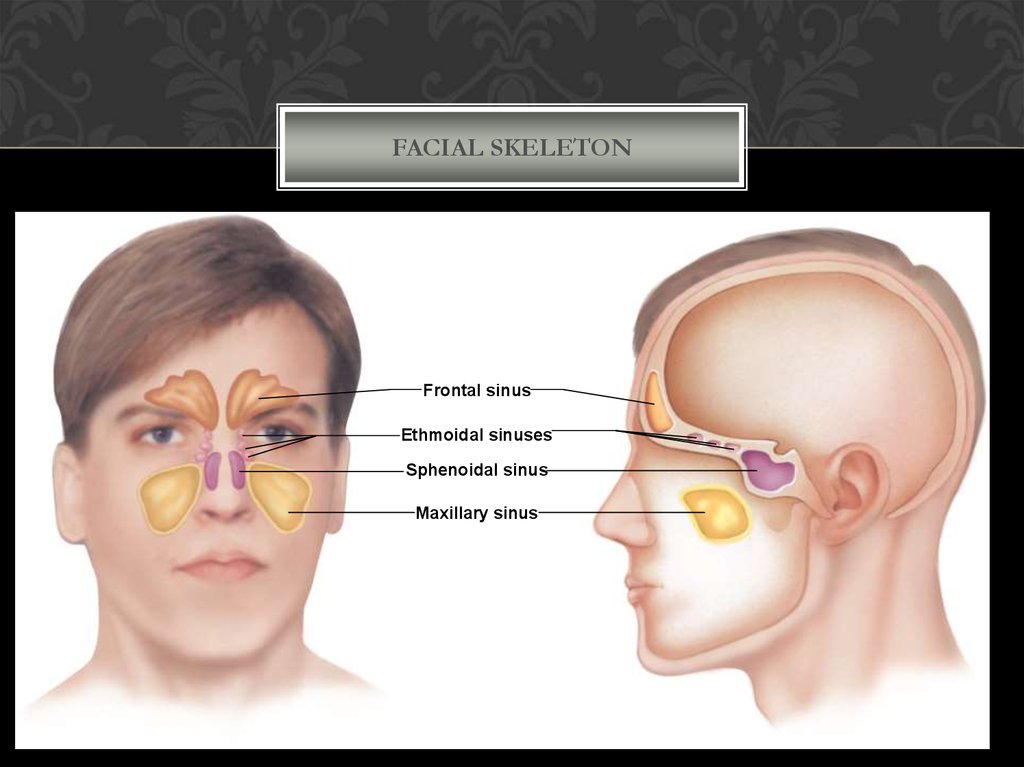





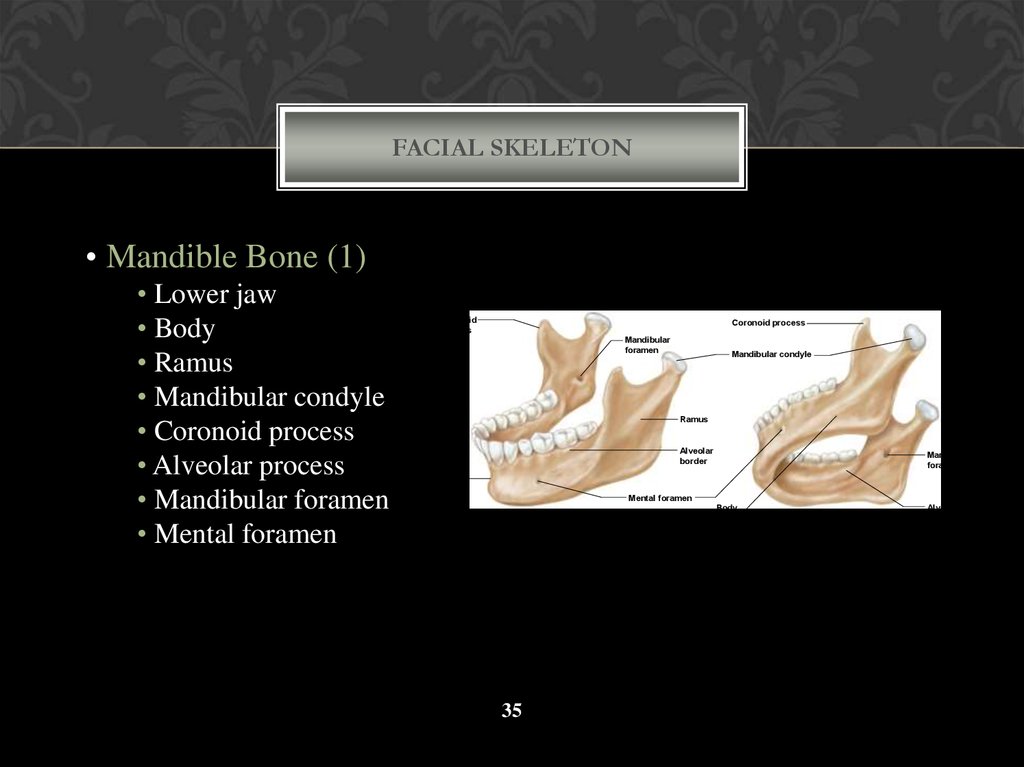




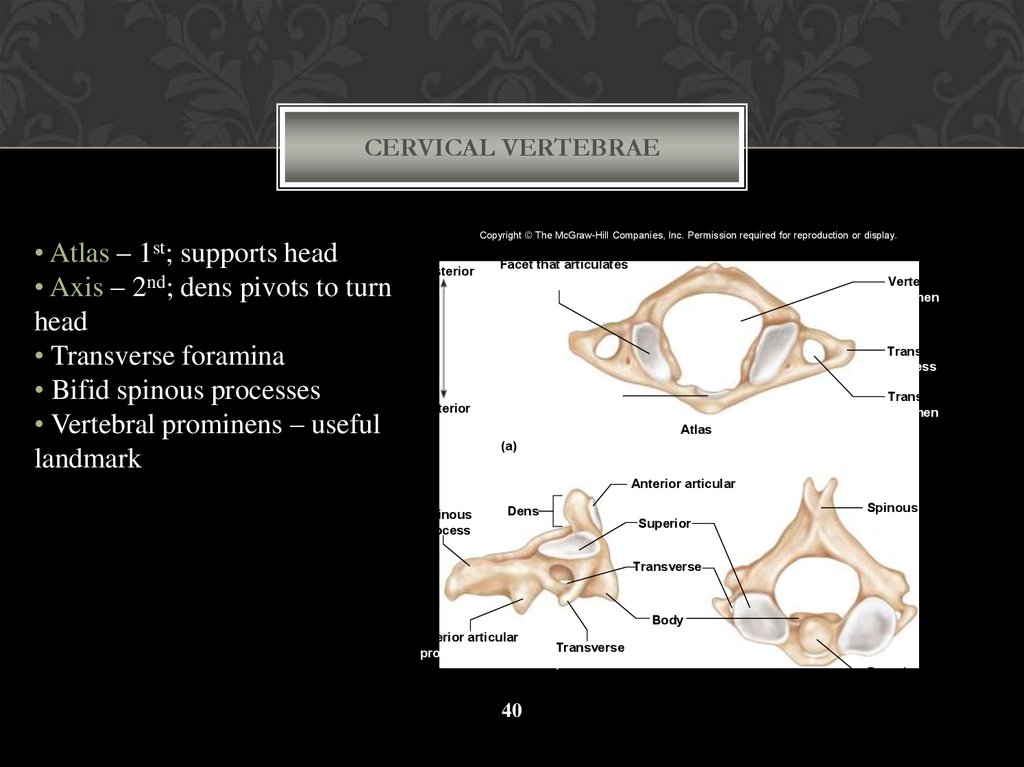

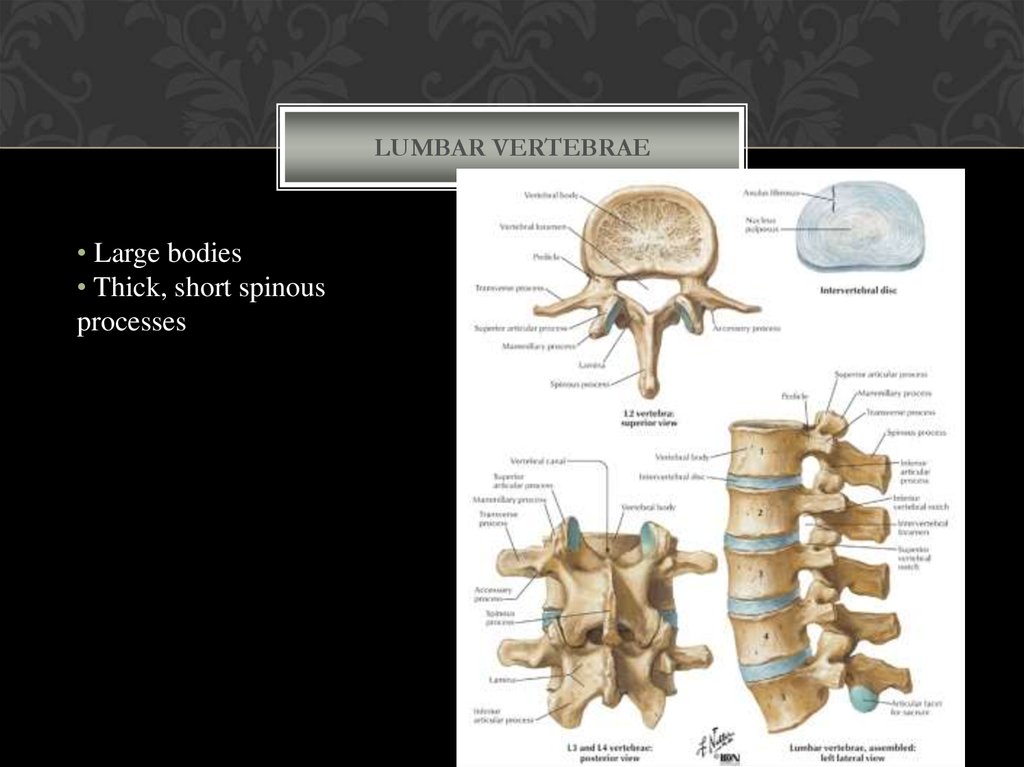







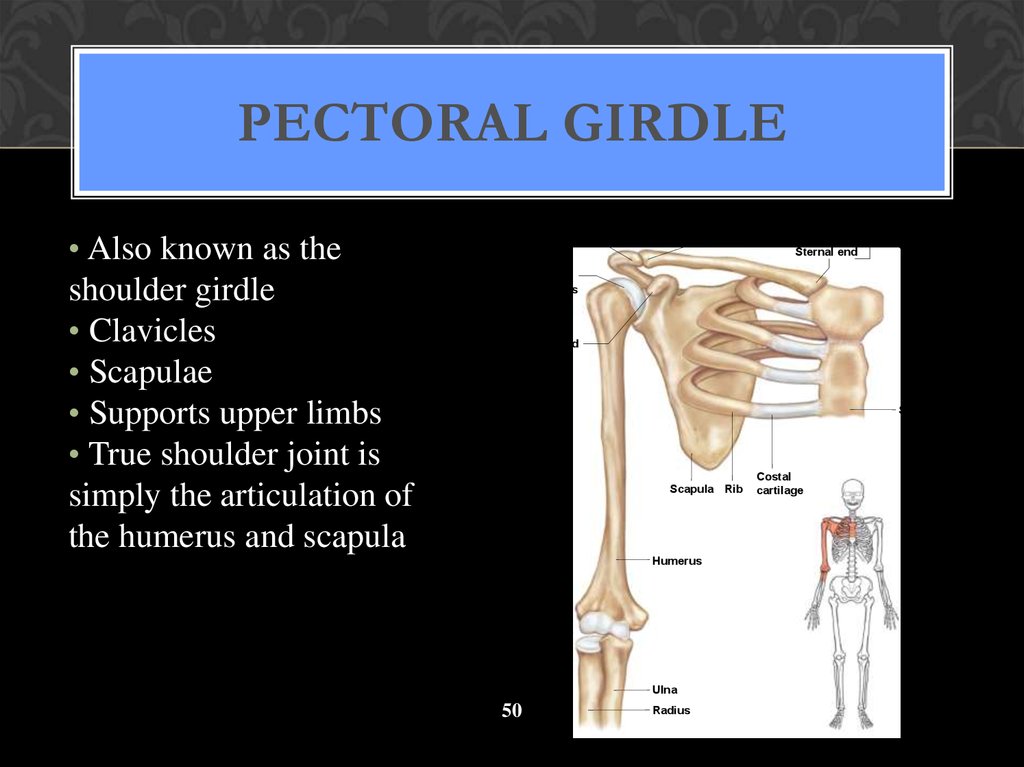





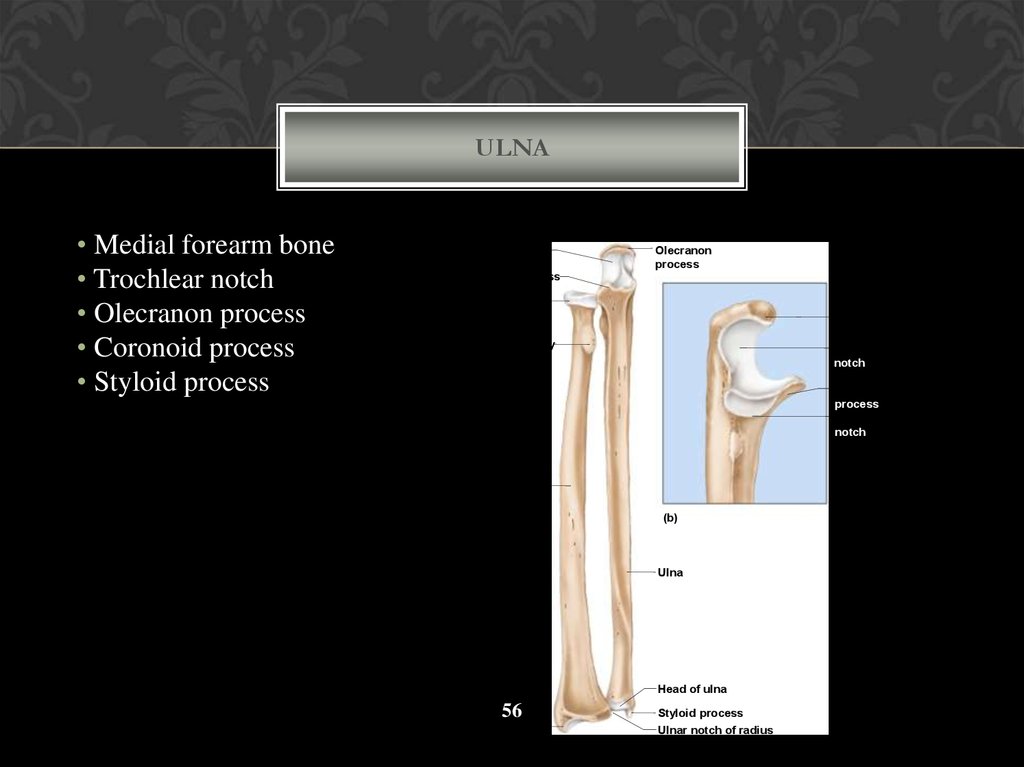







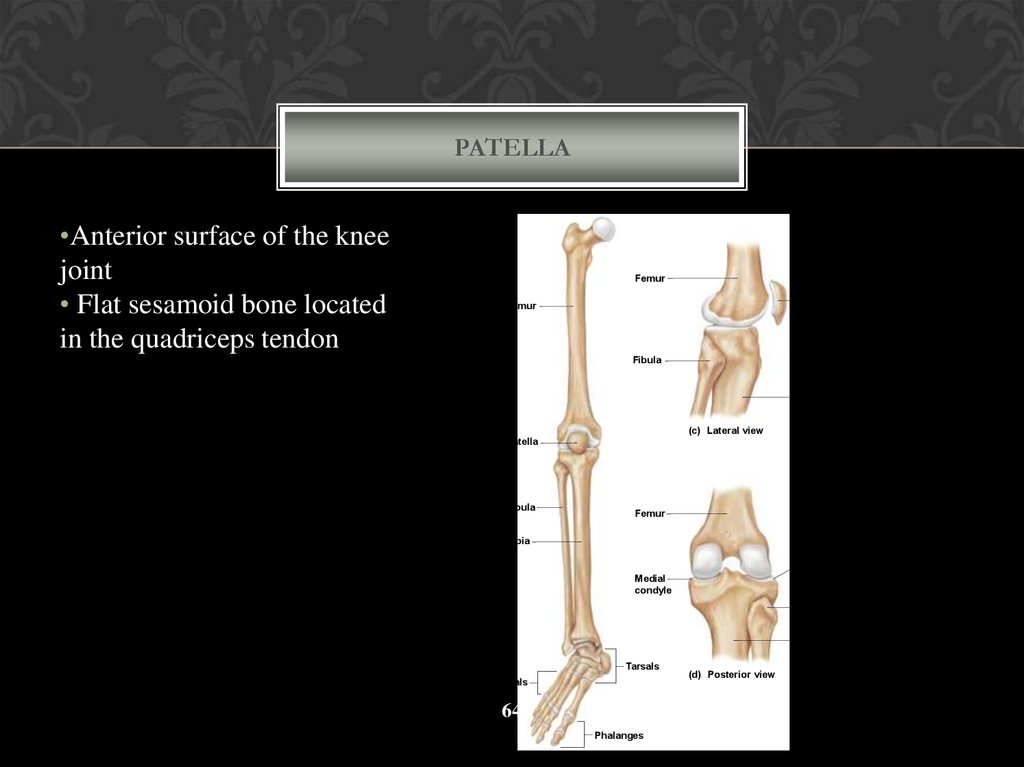
















 Биология
Биология








